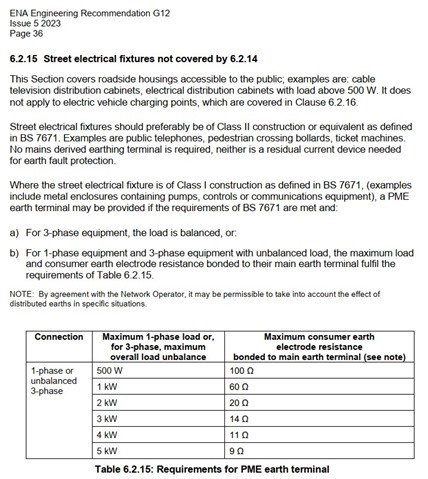Can anyone shed any light on the arithmetical relationship derivation between the value of earth electrode resistance and power consumption as given in DNO ENA guidance note G12.
And do these values apply to TT earthed mains powered street furniture. EG telecoms cabinets?
